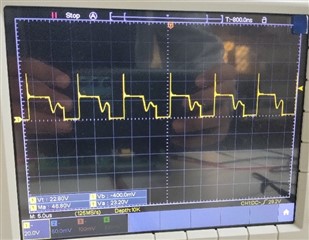Hello,
I am working on flyback converter using LM5023
The circuit I have assembled on dot PCB to test with DC source as follows:

Decided rating of the converter is
Input: 85VAC - 230VAC
Output: 19VDC, 3.43A, 65W
The transformer is custom designed and is rated for
PRI : 85V to 300V
SEC : 19V @ 3.5A
AUX : 10V to 12V @ 50mA
Fs : operating 60-to-100kHz (max 130kHz)
The MOSFET Vds waveform is coming out like this:

1) Why is the peak coming out to be so large even after connecting the snubber circuit to the transformer?
(Even after using the same snubber circuit as LM5023EVM the this high spike is observed, whereas EVM just gives 64V of spike on practical testing)
2) Also the circuit stops working after 30W of load testing?


